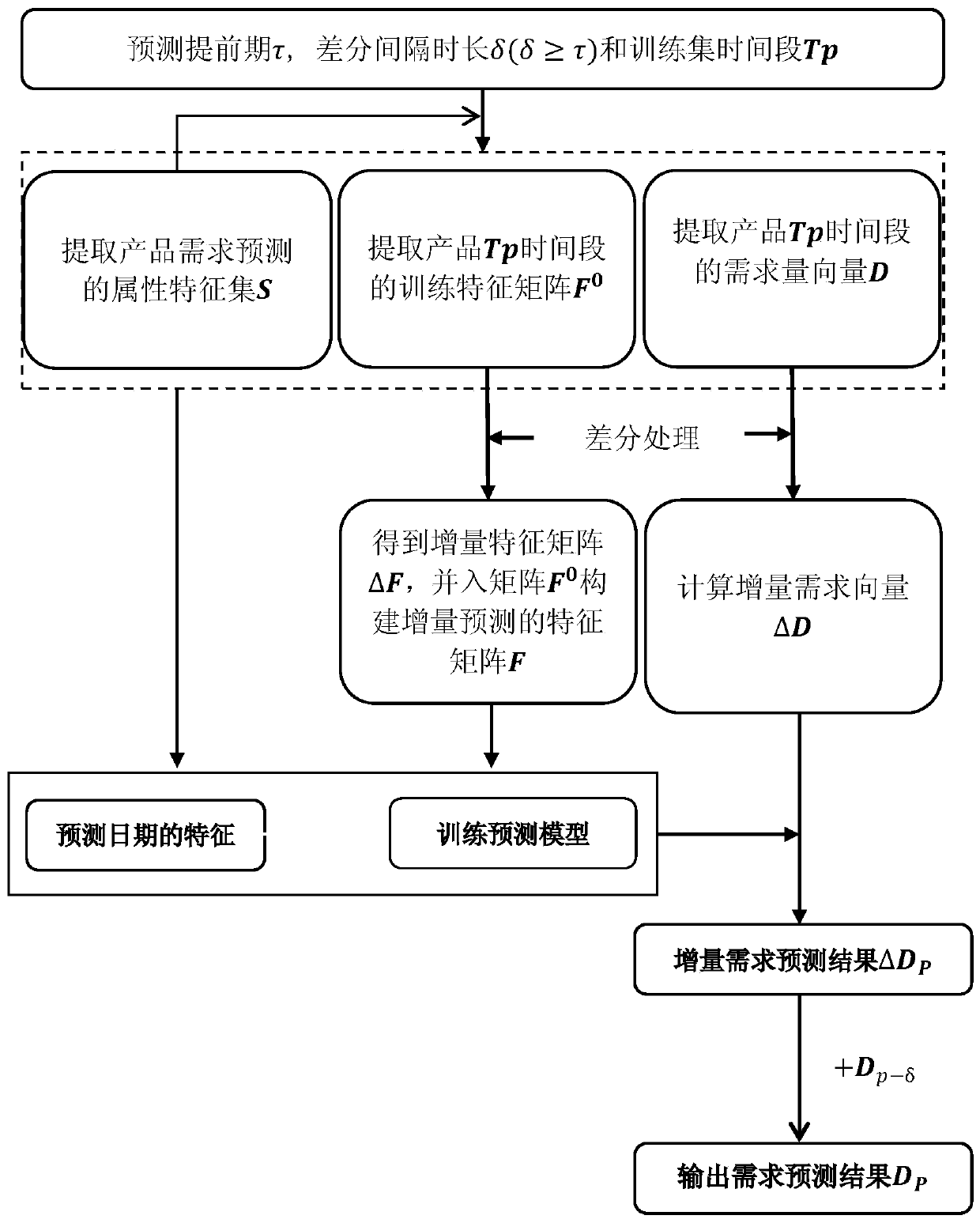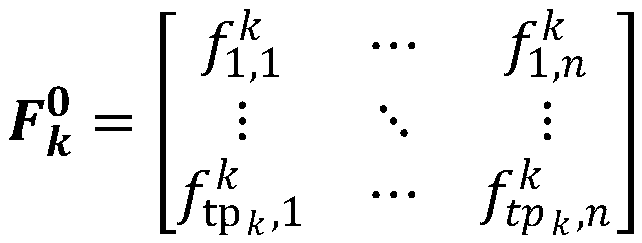Demand prediction method based on incremental algorithm
A demand forecasting and incremental technology, applied in computing, commerce, instruments, etc., can solve problems such as unquantifiable demand, achieve the effect of reducing impact and improving accuracy
- Summary
- Abstract
- Description
- Claims
- Application Information
AI Technical Summary
Problems solved by technology
Method used
Image
Examples
Embodiment 1
[0051] A large-scale 020 instant platform has a total of more than 100,000 stores, and the database has operation records of all stores from January 1, 2016 to August 31, 2019. Now it is planned to predict the order demand of 44 stores in the next day, and the forecast lead time τ=1 day. Through the preliminary analysis of historical sales, it is determined that the difference interval length δ = 1 day, and the training set time period does not exceed TP = [2018-11-1, 2017-11-2, ..., 2019-10-31] T . Some new stores will be launched after November 1, 2017, that is, the length of the time period is tp≤365.
[0052] Extract the prediction feature set S for store order demand prediction. Attribute features include historical sales, prices, promotions, reviews, page views, inventory, product attributes, store attributes, weather, holidays, and days of the week.
[0053] Extract the predictive features of store k for model training
[0054]
[0055] and demand vector wher...
Embodiment 2
[0068] A large supermarket has a total of 1,000 existing SKUs, and the database has operating records of all SKUs from January 1, 2016 to October 31, 2019. It is currently planned to conduct demand forecasting for SKUs with a procurement lead time of 3 days to support daily replenishment decisions. Forecast lead time τ = 3 days. Through the preliminary analysis of historical sales, it is determined that the difference interval length δ = 7 days, and the training set time period is TP = [2016-1-1, 2017-1-2, ..., 2019-10-31] T , the time period length is tp, a total of 1399 days.
[0069] Extract the prediction feature set S for product demand prediction. Attribute features include historical sales, prices, promotions, reviews, page views, inventory, product attributes, competing product information, page display, weather, holidays, and days of the week.
[0070] Extract the predictive features of product k for model training
[0071]
[0072] and demand vector where ...
Embodiment 3
[0085] A large supermarket has a total of 1,000 existing SKUs, and the database has operating records of all SKUs from January 1, 2016 to October 31, 2019. Now it is planned to forecast the demand for the 30-day sales in October 2019 of SKUs with a procurement lead time of 7 days in a region to support the replenishment decision of the general warehouse. Forecast lead time τ = 7 days. Through the preliminary analysis of historical sales, it is determined that the difference interval length δ = 1 month, and the training set time period is TP = [2016-1-1, 2017-1-2, ..., 2019-10-31] T , the time period length is tp, a total of 1399 days.
PUM
 Login to View More
Login to View More Abstract
Description
Claims
Application Information
 Login to View More
Login to View More - R&D
- Intellectual Property
- Life Sciences
- Materials
- Tech Scout
- Unparalleled Data Quality
- Higher Quality Content
- 60% Fewer Hallucinations
Browse by: Latest US Patents, China's latest patents, Technical Efficacy Thesaurus, Application Domain, Technology Topic, Popular Technical Reports.
© 2025 PatSnap. All rights reserved.Legal|Privacy policy|Modern Slavery Act Transparency Statement|Sitemap|About US| Contact US: help@patsnap.com



